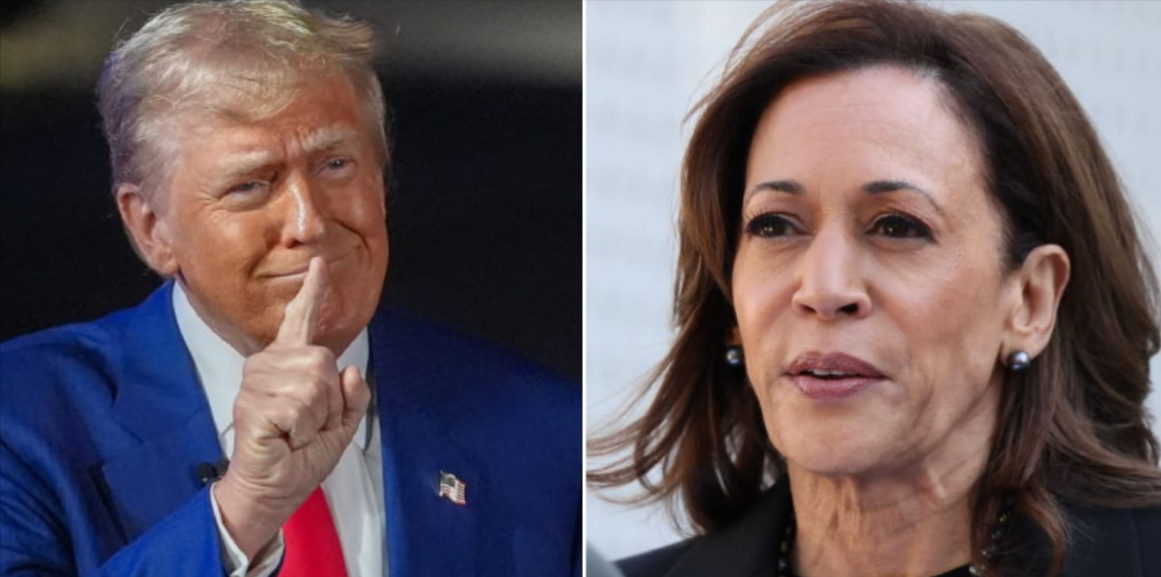Election Prediction Model Gives Trump A 62.4% Chance Of Victory

For the first time, a prominent election prediction model has shifted to "lean" in favor of former President Donald Trump after weeks of rating the race as a "toss-up."
This shift comes on the heels of new polling data indicating that Vice President Kamala Harris's national lead has either shrunk or disappeared entirely. Furthermore, Trump is now narrowly leading in several key swing states that will play a decisive role in determining the election's outcome, according to a report from the UK’s Daily Mail.
In collaboration with J.L. Partners, the Daily Mail created an election model that now projects Trump has a nearly 63 percent chance of winning.
"When these numbers are entered into our exclusive prediction model, it reveals that Trump would secure the overall win in 62.4 percent of our simulations. Last week, that number was 59.8 percent. The new data suggests the momentum is with Trump rather than the vice president, moving the overall projection from ‘toss-up’ to ‘lean Trump,’” the Daily Mail reported.
Despite this shift, the race remains close, with Harris retaining nearly a 40 percent chance of victory. The outlet noted, “With three weeks remaining in the campaign, everything is still to play for.”
Callum Hunter, a data scientist with J.L. Partners, highlighted several key polls, including New York Times surveys showing Trump leading by five to six points in Arizona, while Harris holds a three- to four-point edge in Pennsylvania. A separate poll by Redfield and Wilton found Trump with a narrow two-point lead in Pennsylvania.
“The race continues to tilt in Trump’s favor, even though a New York Times poll gives Harris a slight lead in Pennsylvania,” Hunter explained in his latest briefing. He noted that while some individual polls favor Harris, the overall national trend is shifting away from her. “This model uses correlations and national vote shares to generate each state's average, meaning that a favorable poll for Harris in one state doesn't automatically push that state in her favor."
Hunter added that the model takes a holistic view of the election rather than relying on isolated polls. "The trend is continuing in Trump's favor and has shown little sign of reversing since it began in late September. With just over three weeks left, Harris may not have enough momentum to shift voter sentiment.”
Harris, who entered the race in July after President Joe Biden withdrew his reelection bid, initially enjoyed favorable press coverage and impressive fundraising. However, her recent polling bump has begun to unravel, with Trump overtaking her in recent weeks.
According to the most recent projections, Trump is forecasted to secure 312 Electoral College votes to Harris’s 226. The total number of Electoral College votes up for grabs is 538, with the threshold for victory being 270.
The shifting dynamics have also reduced the likelihood that Pennsylvania will be the decisive battleground. A J.L. Partners poll indicates the two candidates are tied in Pennsylvania at 47 percent each. Last week, Pennsylvania was the deciding state in 40 percent of the simulations, but it now holds that distinction in 36 percent of the model’s scenarios. Michigan and North Carolina are emerging as key states that could tip the election in favor of either candidate.
Nevada has shifted 3.1 points in Trump’s favor this week, and he is now projected to win the state in 60.5 percent of simulations, moving it from a "toss-up" to "lean Trump." In Arizona, Trump's chances of winning have increased by 2.6 points, keeping the state firmly in the "likely Trump" column.